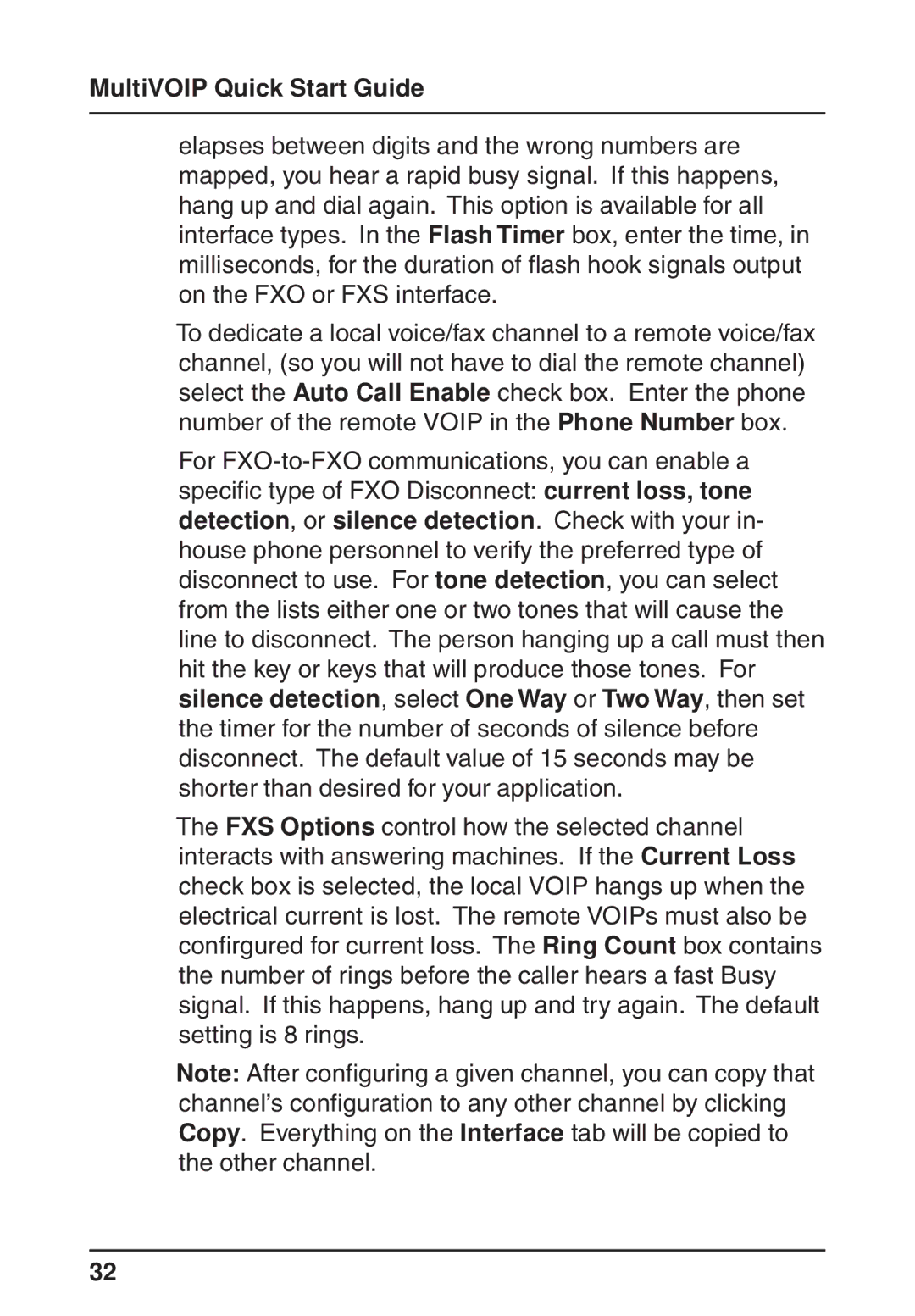
MultiVOIP Quick Start Guide
elapses between digits and the wrong numbers are mapped, you hear a rapid busy signal. If this happens, hang up and dial again. This option is available for all interface types. In the Flash Timer box, enter the time, in milliseconds, for the duration of flash hook signals output on the FXO or FXS interface.
To dedicate a local voice/fax channel to a remote voice/fax channel, (so you will not have to dial the remote channel) select the Auto Call Enable check box. Enter the phone number of the remote VOIP in the Phone Number box.
For
The FXS Options control how the selected channel interacts with answering machines. If the Current Loss check box is selected, the local VOIP hangs up when the electrical current is lost. The remote VOIPs must also be confirgured for current loss. The Ring Count box contains the number of rings before the caller hears a fast Busy signal. If this happens, hang up and try again. The default setting is 8 rings.
Note: After configuring a given channel, you can copy that channel’s configuration to any other channel by clicking Copy. Everything on the Interface tab will be copied to the other channel.
32
